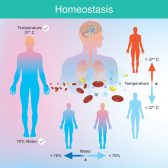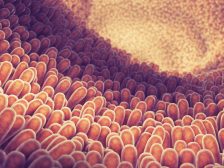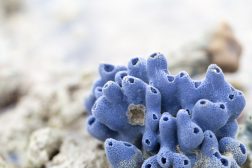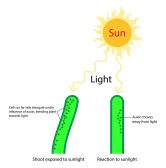Protein Synthesis

mRNA transcript for translation
If you have jumped straight to this page, you may wish to look at the previous tutorial about DNA, which gives background information on protein synthesis.
As mentioned, a string of nucleotides represent the genetic information that makes us unique and the blueprint of who and what we are, and how we operate. Part of this genetic information is devoted to the synthesis of proteins, which are essential to our body and used in a variety of ways. Proteins are created from templates of information in our DNA, illustrated below:

The X marked nucleotides are an example of a DNA sequence that would be used to code for a particular protein. Every DNA molecule consists of two strands, only one of which is the coding strand containing the information for protein sequences. The complementary strand is the template strand, and it is this strand that the RNA nucleotides line up on to make a copy of the DNA coding strand.
The sequence of these nucleotides is used to create amino acids, which are linked together to make a protein.
mRNA
In eukaryotes, most genetic information is found in the nucleus, though protein synthesis actually occurs in ribosomes found in the cytoplasm, either as free ribosomes or on the rough endoplasmic reticulum. If protein is to be synthesized, then the genetic information in the nucleus must be transferred to these ribosomes. This is done by mRNA (messenger ribonucleic acid). It is very similar to DNA, but fundamentally differs in two ways
- The base thymine in DNA is replaced by the base uracil in mRNA.
- The sugar deoxyribose in DNA is replaced by the sugar ribose in mRNA.
At the beginning of protein synthesis, just like DNA replication, the double helix structure of DNA uncoils in order for mRNA to replicate the genetic sequence responsible for the coding of a particular protein.
In the beginning, the DNA has uncoiled, allowing the enzyme RNA polymerase to move in and transcribe (copy) the genetic information into mRNA. If the coding strand of DNA looks like this: G-G-C-A-T-T, then the template strand would look like this: C C G T T A and the mRNA would look like this G G C A U-U (remembering that uracil replaces thymine).
With the genetic information responsible for creating substances now available on the mRNA strand, the mRNA moves out of the nucleus and away from the DNA towards the ribosomes.
- Where does protein synthesis take place? Best Answer!
- How could one change in a DNA nucleotide alter the formation of the translated protein? Featured Answer!
- Can an enzyme have a negative activity? Featured Answer!
You will also like...

Physiological Homeostasis
Homeostasis is essential to maintain conditions within the tolerable limits. Otherwise, the body will fail to function p..

Digestion and Absorption of Food
The gastrointestinal system breaks down particles of ingested food into molecular forms by enzymes through digestion and..

Plant Biology
Plantlife can be studied at a variety of levels, from the molecular, genetic and biochemical level through organelles, c..

Primitive Animals
Life, as we know it today, is presumed to have started in the sea and many of them were likely eukaryotic animal-like or..

Circulation
The circulatory system is key to the transport of vital biomolecules and nutrients throughout the body. Learn about the ..

Plant Auxins – Phototropism & Geotropism
Plants produce hormones to regulate their growth. Auxins, for instance, influence plant growth. Know the role of auxin i..
